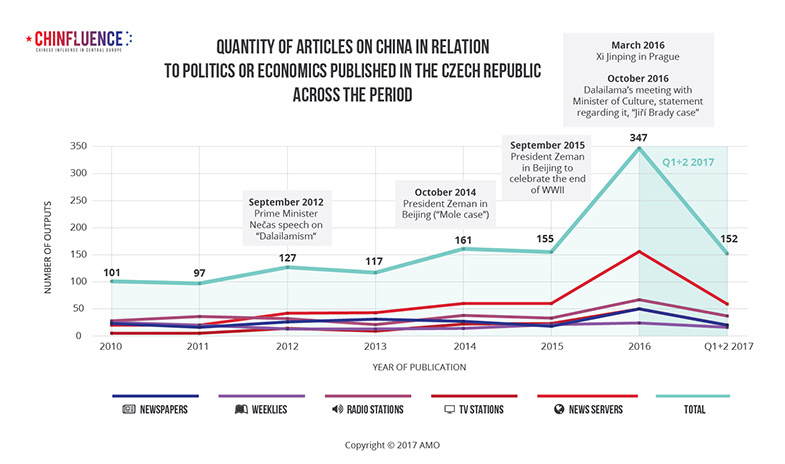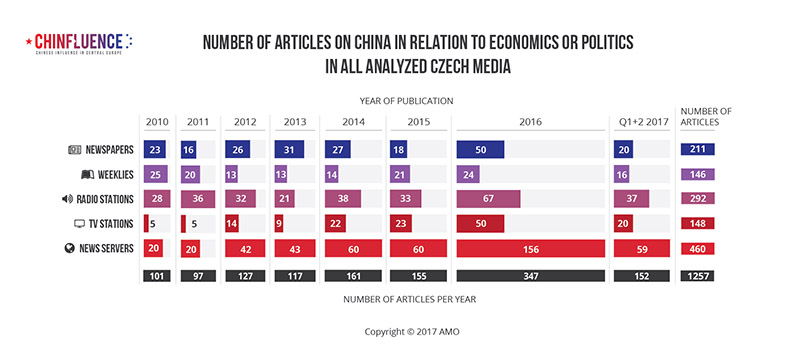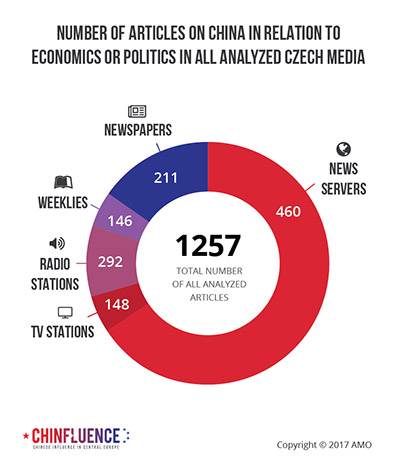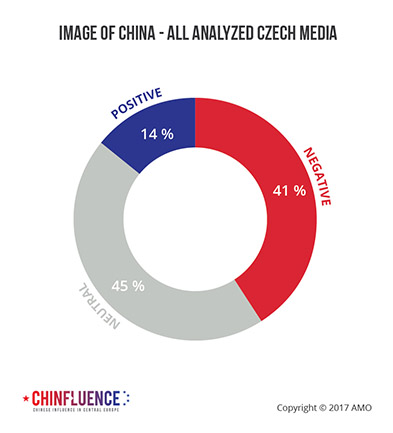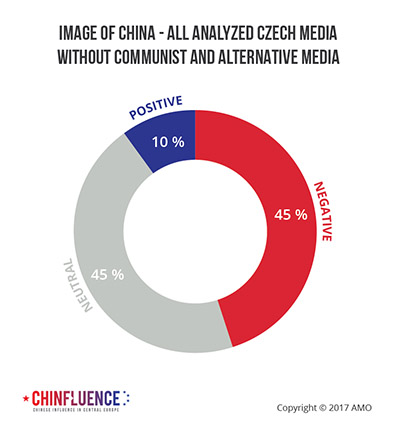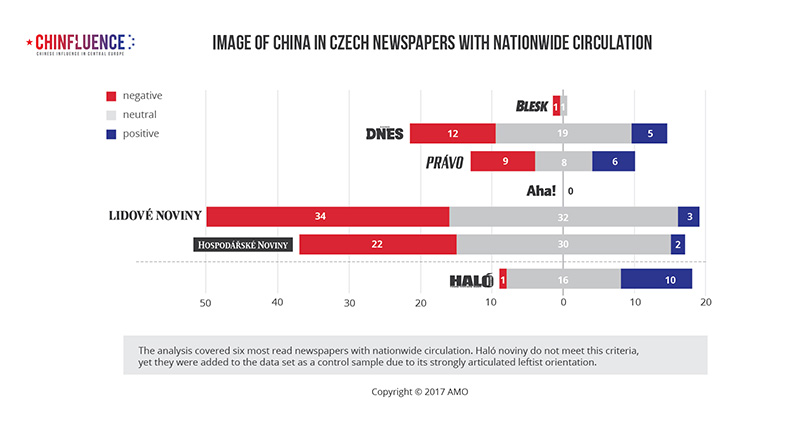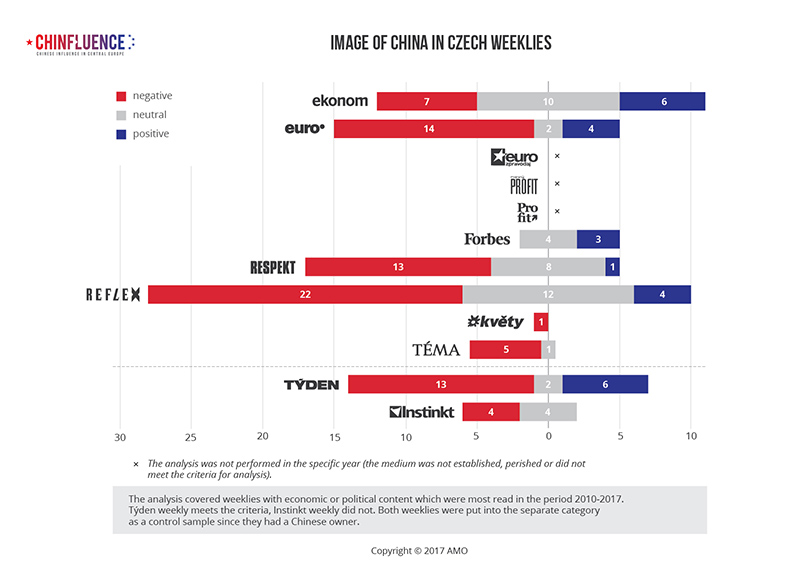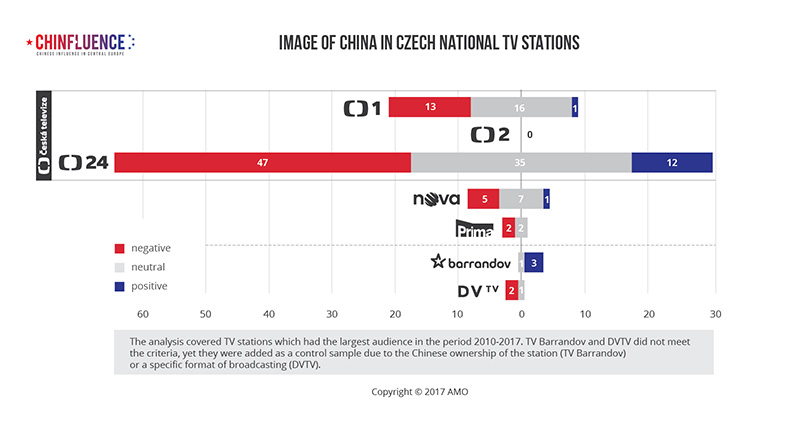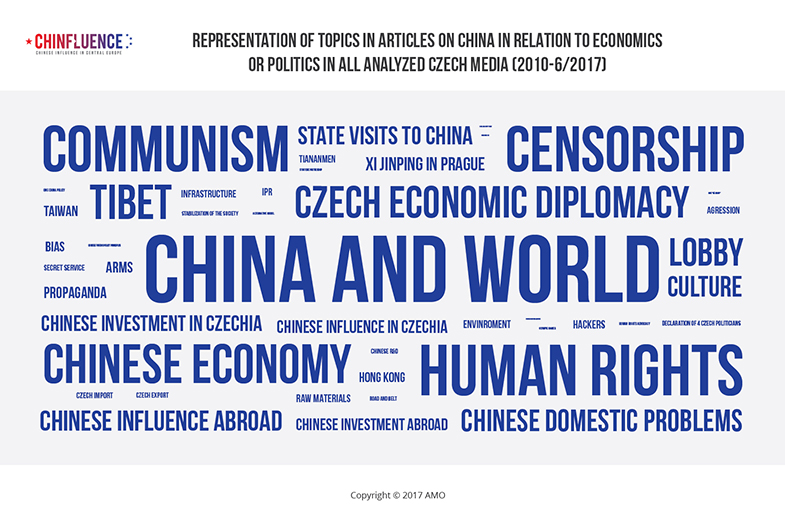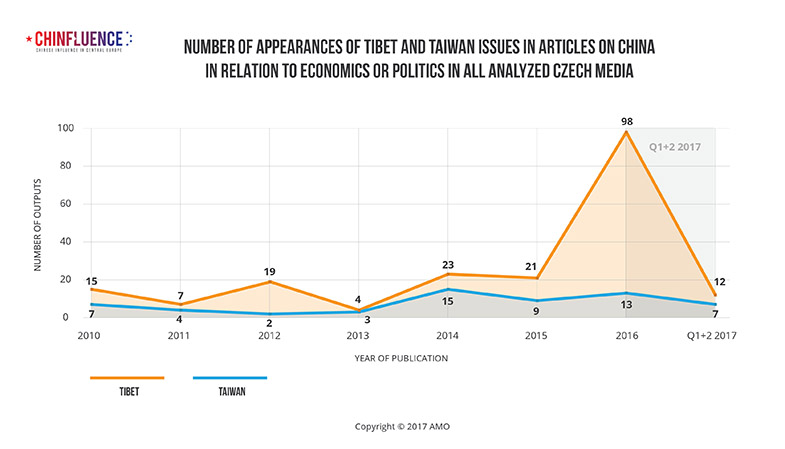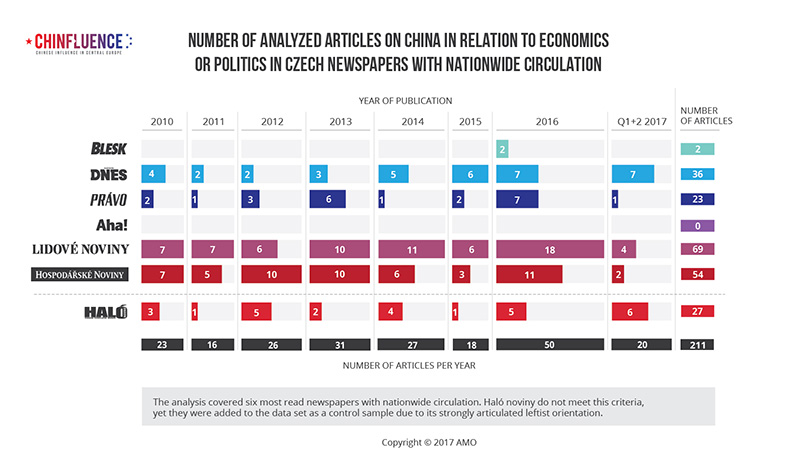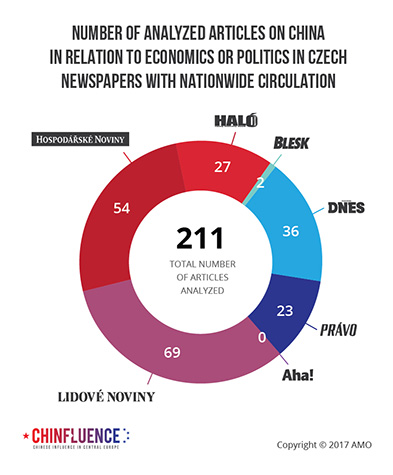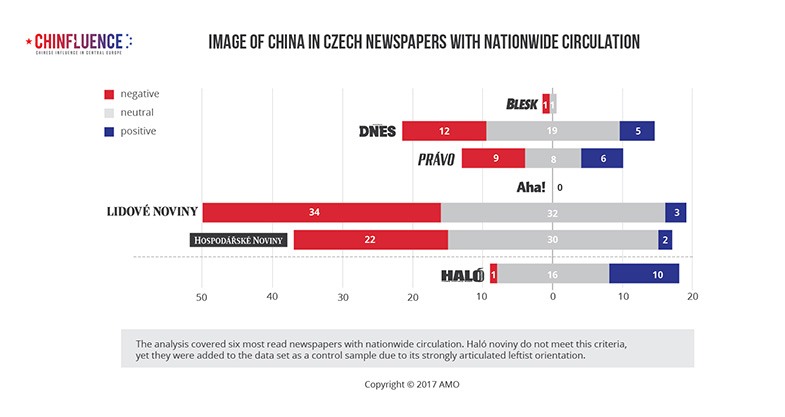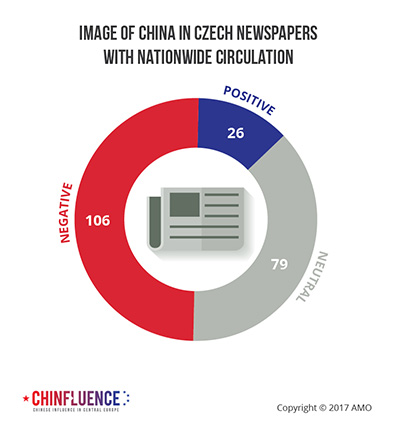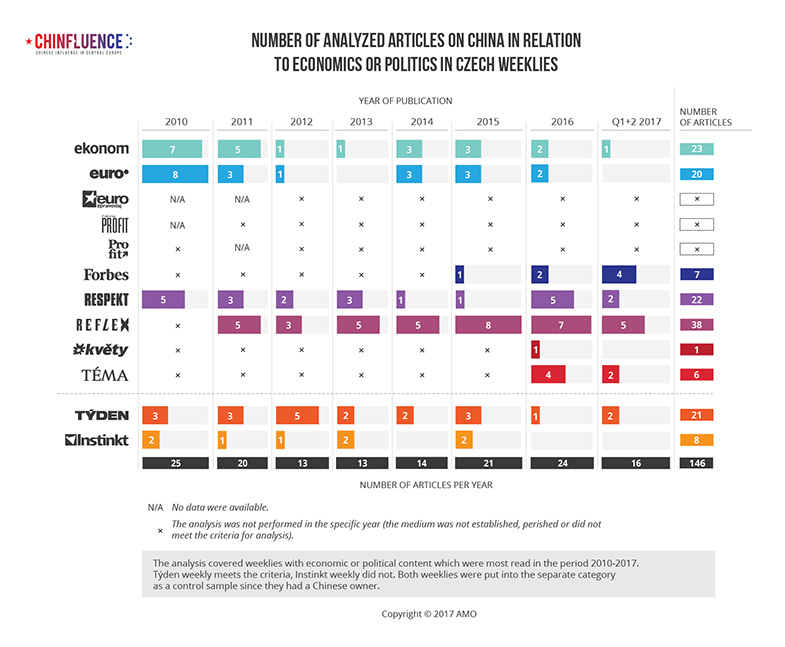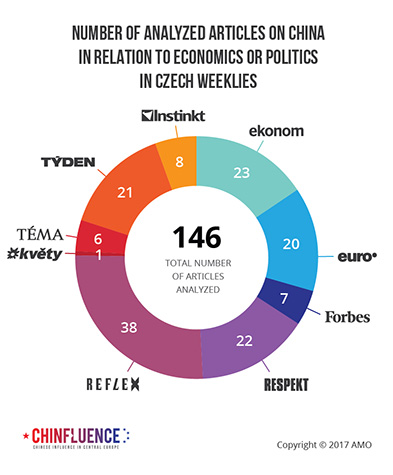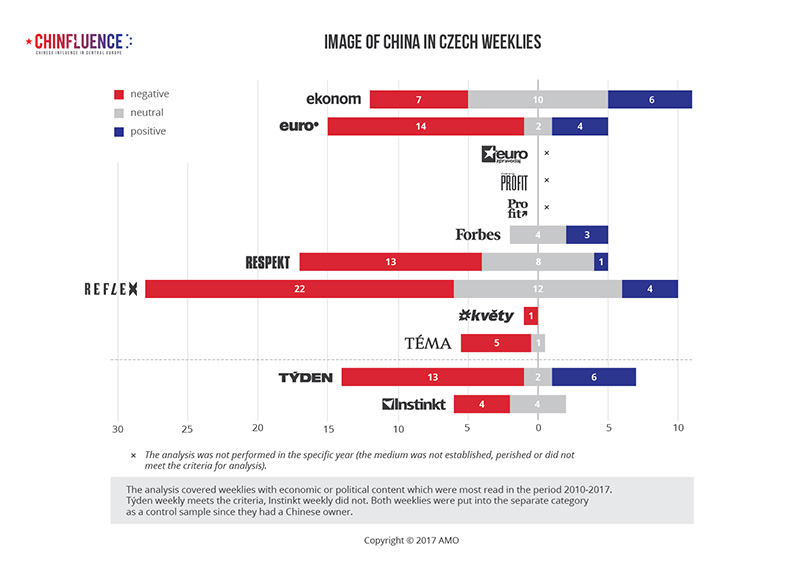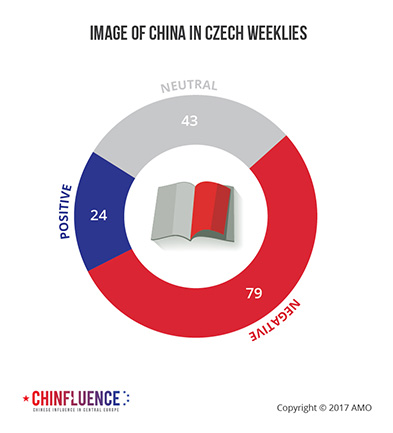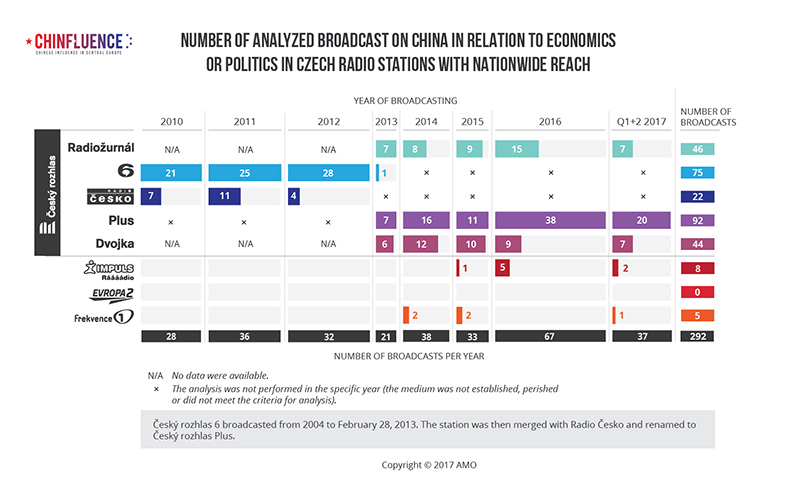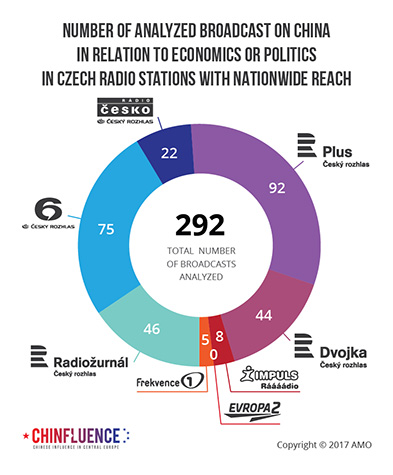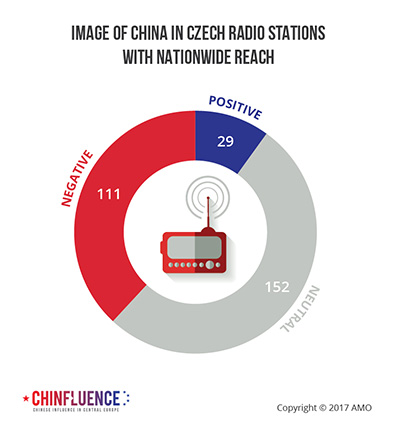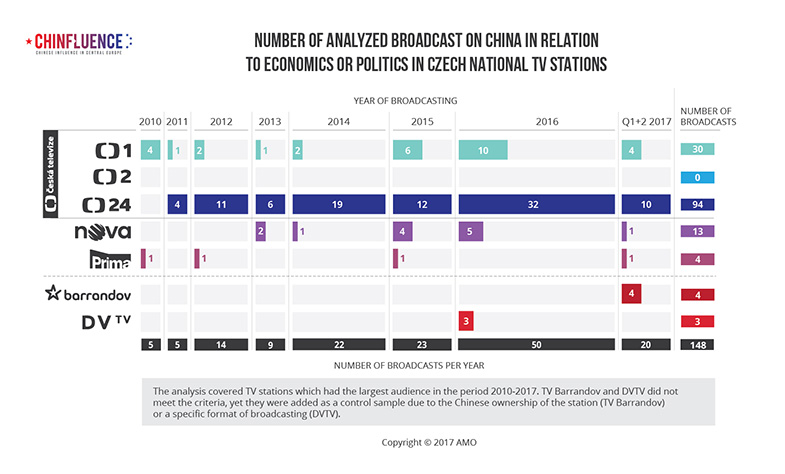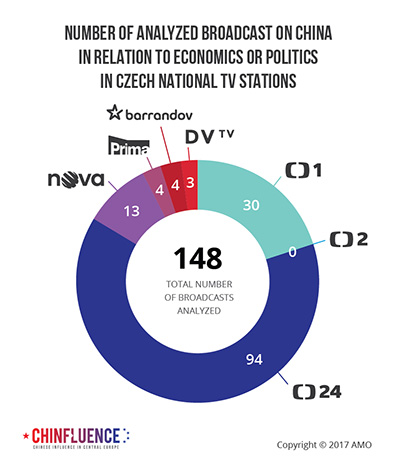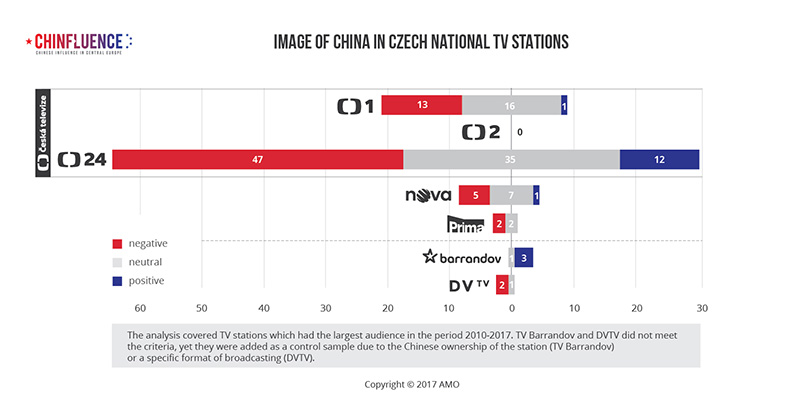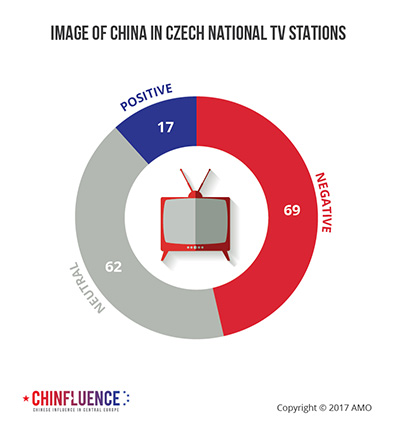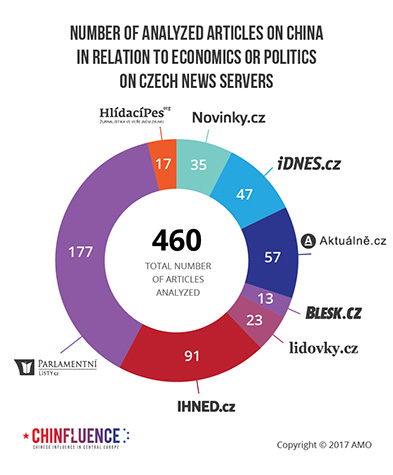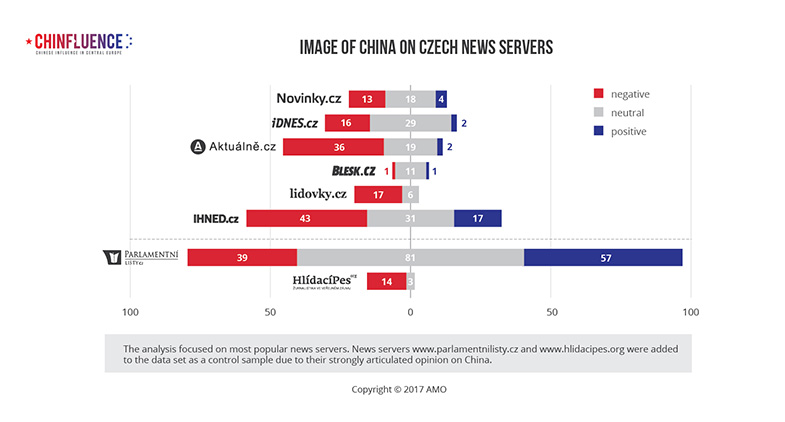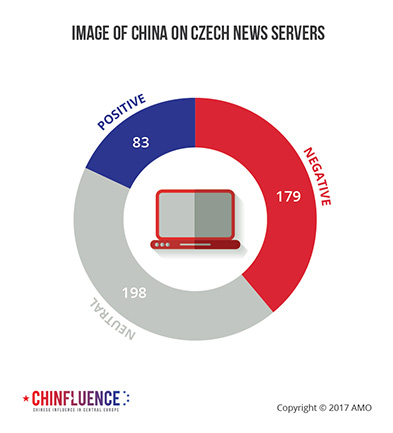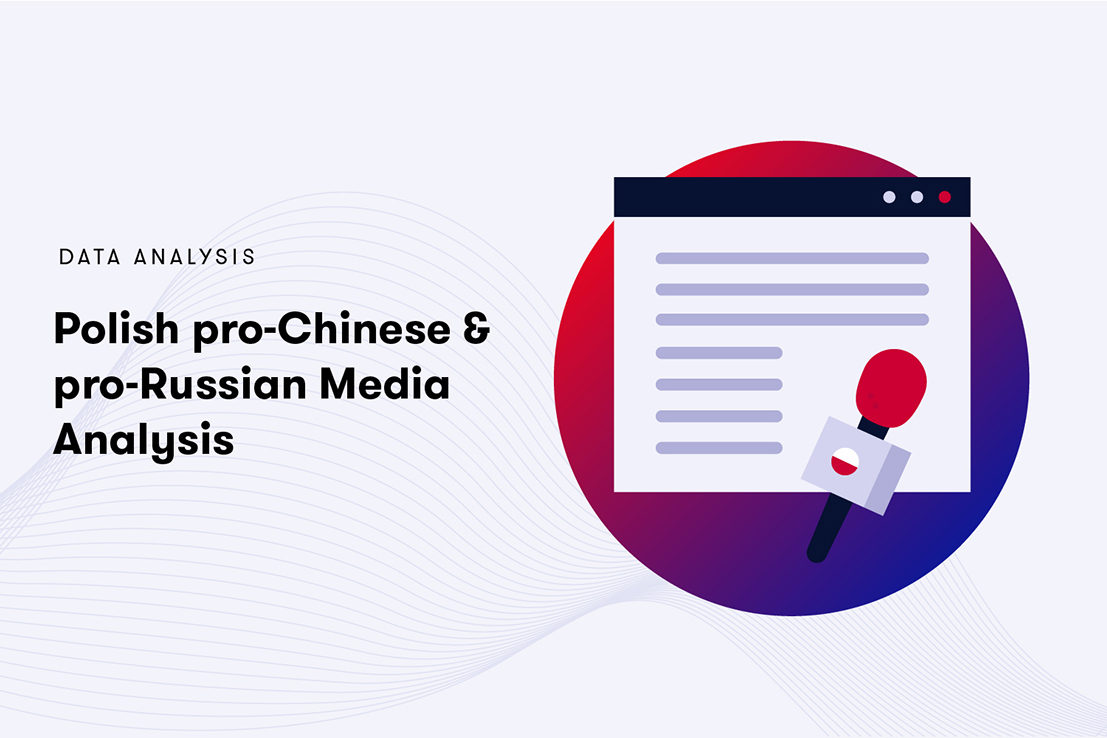Czech Media Analysis (2010-2017)

Altogether, the project subjected to an analysis 1257 Czech media outputs, published between 2010 and June 2017 on China in connection with economic and/or political issues. For the analysis, we selected 42 media which were most widely read, listened to or followed – dailies, weeklies with a political or economic focus, radio and TV stations and news servers. We analyzed both mainstream and alternative media, those that are public as well as privately owned, including media (co)owned by Chinese companies.
For the results of the analysis, please check the following infographics.
The first finding reveals that the number of articles on China rose dramatically with the intensification of Czech-Chinese bilateral political relations.
However, the rise of media outputs reporting on China by almost 250 % resulted almost entirely from the embedding of Chinese topics in Czech domestic politics. The expansion of coverage correlates with years that brought about changes in Czech foreign policy towards China. This is clearly evident in reactions to the statements and activities of President Miloš Zeman. This trend culminated in 2016 in response to the official visit by Chinese President Xi Jinping, the Prague stay of the Dalai Lama and his meeting with the Minister of Culture, Daniel Herman, and the subsequent proclamation on Czech-China relations by four highest ranking representatives of the Czech Republic.
The image of China in the Czech media over the period in vogue was mostly negative or neutral. Only 14 % of the analyzed media outputs were inclined to view China positively.
Dedicated sections above provide detailed insight into the situation in specific types of media.
Aforementioned findings do not question the objectivity of the reporting concerning China – the project did not verify the validity of the information, only assessed whether the message, vis-a-vis China, was neutral, negative or positive.
In hardline leftist media(Haló noviny) or media with a Chinese (co)owner, the image of China was distinctly more positive.On the cases of the Týden weekly and TV Barrandov, it is evident that the ownership by the Chinese company CEFC led to an exclusively positive coverage of China.
The polarity of analyzed outputs did not evolve significantly over the past six and half years. Despite public promises of future Chinese investment, the image of China in Czech media remains mostly negative. Generally, Czech media start to exhibit a tendency to portray China as a direct opposite to the values and preferences of the Czech Republic. This process of the ‘othering’ of China gradually sifts into outputs that, ostensibly, do not contain any link to the country (e.g. articles on alleged ‘censorship’ on the Czech internet).
Regarding the prevalence of the topics, Czech media paid most attention to Chinese economic and political relations with other countries and organizations (US, Russia, EU, India, Japan, etc.) – a logical reflection of journalists on the position China has gradually risen to.
Human rights, including general information on abuses and violation of minorities’ rights, the death penalty, detention of dissent and organ harvesting, were the second most important category of topics covered by the Czech media, proving that journalists did not subscribe to the alleged tradeoff between human rights issues and economic benefits, advocated as necessary by a part of the political and economic elites. The human rights mantra, however, did not go beyond stating the notoriously known and in various cases the issue was artificially, perhaps reflexively, attached to articles which dealt with seemingly unrelated topics.
Communism, authoritarianism and censorship followed in frequency, revealing the importance of the issue to Czech journalists and Czech society in general which have not yet digested its own Communist past.
While the prevalence of the above-mentioned categories remained constant in the studied period, notions of Tibet, though it scored in frequency, fluctuated in time, culminating in 2016 when the Chinese president Xi Jinping and Dalai Lama both visited Prague. A counter-narrative in which Tibet was presented as having been liberated by the People’s Liberation Army in 1959, saved from theocracy that supported slavery and feudalism and from Dalai Lamas who punished disobedient subjects with ‘cutting off hands and poking eyes out,’ was spread in the Czech media landscape by president Zeman, Miloslav Ransdorf, then Communist member of the European Parliament, journalists in the Communist daily Haló noviny, alternative media and the Chinese official propaganda apparatus represented by the Chinese embassy. Interestingly, the issue of strategic position and economic and political relations with Taiwan were – in comparison to the Tibet issue – largely marginalized though Taiwan and the Czech Republic share a similar history of transition from an authoritarian regime to democracy, an experience of living on the borders with a great power and, on top of that, Taiwan is one of the three most important Asian investors in the Czech Republic.
The analysis of the Czech media outputs, executed by ChinfluenCE, demonstrated that the Czech debate on China is highly politicized and stereotyped. The media often did not inform about China as such, i.e. its domestic politics, economy or social issues. In all these topics, the Czech public is relegated to a minimum of information, mostly imported from foreign news agencies or English-speaking media sources.
We find it disturbing that even information about current developments in Czech-Chinese relations is severely limited: the names of the members of business delegations to China are kept confidential, exact data on Chinese investment in the Czech Republic is not available, information about the proceedings of the high-profile Czech-Chinese investment forum are not publicized.
The hijacking of the China issue by domestic politics and economic interests masks several perils. Instead of a serious debate on China’s growing international role and Czech foreign policy towards it, or a sober assessment of possible benefits and potential risks of Chinese investment for the Czech economy, a hollow debate is waged on whether to have any relations with a regime some find obnoxious – as if such a choice was real.
A debate that is fragmented, non-transparent and emotional should apparently serve no-one – except it does. It helps to draw attention away from the real content of agreements, from the motivations of political and economic elites and from the actual Chinese strategy in the region.
Unlike the case of the Slovak media’s reporting on China, the image of Chinain the Czech media over the period in vogue was mostly negative or neutral. Only 14 % of the analyzed media outputs were inclined to view China positively. It is in the sharp difference from the image offered by Slovak media to its domestic audience.
The role of political and economic elites is dissected in the section on the analysis of actors.
